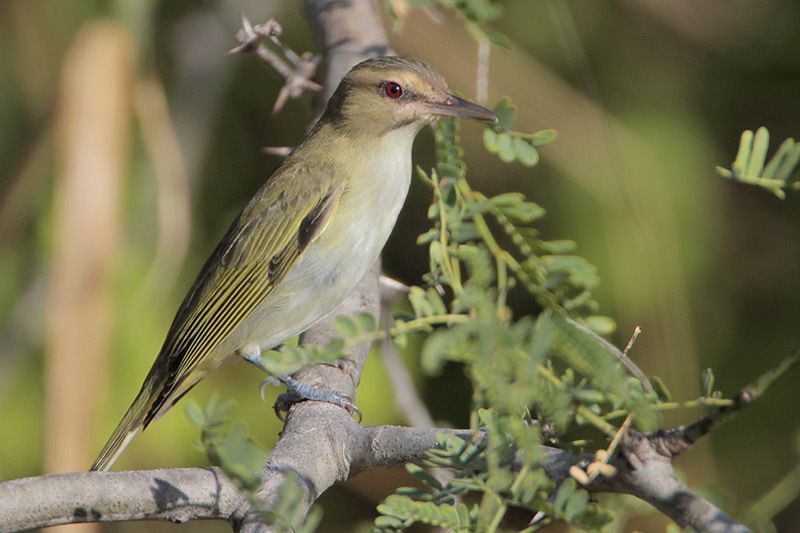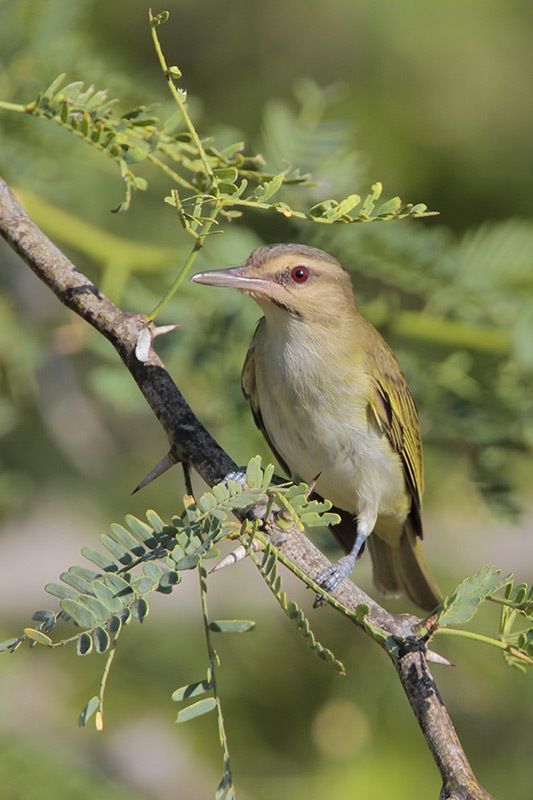Black-whiskered Vireo
Vireo altiloquus
Family: (Vireonidae) Vireos
Seasonal Occurrence: Uncommon in our area.
Profile by Wyatt Egelhoff: This denizen of the Caribbean is remarkably similar to the much more familiar (to the US birder) Red-eyed Vireo. Black-whiskered Vireo show less contrast between the gray crown and greenish-brown back and wings than Red-eyed. Black-whiskered have longer, heavier bills with a prominent hook at the tip and typically duller (though still slightly reddish) eyes. Their eponymous black “whiskers” are diagnostic, though there is individual variability of the shade and thickness of this mark, which can make it difficult to see in the field. The habit for Vireos to feed and sing in the canopy can certainly compound this ID challenge. The song of the Black-whiskered Vireo is gruffer and flatter than that of a Red-eyed, having a quality more like that of a House Sparrow than the cheerful, halting “question and answer” song of a typical Red-eyed. A singing Black-whiskered Vireo was discovered earlier this week (June 2023) at the Smith Oaks Sanctuary in High Island, providing a serendipitous surprise during a time of year when species-richness is at its lowest on the immediate coast.
Black-whiskered Vireos are found primarily on islands of the Caribbean with a portion of the population wintering in northern South America. The species’ major foothold in the United States is in coastal peninsular Florida where it is a regular sight in scrubby mangrove habitat during the warmer months. In recent decades the species has been found with increasing regularity throughout the northern Gulf of Mexico - including Texas - primarily during spring migration. The recent Smith Oaks record represents the first June record for the species in Texas and follows on the heels of an apparent nesting attempt by the species at Peveto Woods Sanctuary in adjacent Cameron Parish, Louisiana in June 2022. Increased observer effort at a time that has traditionally seen very few birders braving the sweltering heat and onslaught of biting insects on the immediate coast may be partly responsible for the uptick in sightings, as well as increased awareness of field marks for separating this species from the Red-eyed Vireo.
-
Cornell Lab of Ornithology
-
Field Guide

© Greg Lavaty, www.texastargetbirds.com

© Greg Lavaty, www.texastargetbirds.com

© Greg Lavaty, www.texastargetbirds.com

© Greg Lavaty, www.texastargetbirds.com




















